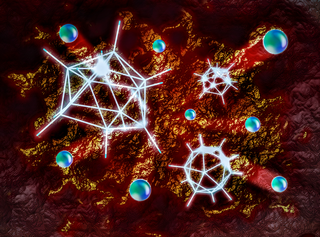Other news

Article in Sustainable Energy Fuels
Assistant Professor Anton Gradišek, PhD from the Department of Condensed Matter Physics F5 and colleagues from Australia have published in Sustainable Energy Fuels the article Hydrated lithium nido-boranes for solid–liquid hybrid batteries.
Hydridoborate salts are considered as promising solid-state electrolyte candidates for the development of solid-state batteries (SSBs). The presence of coordinated water in the crystal structure may facilitate the migration of the cation, yielding compounds with high ionic conductivity. In the present study, two samples of hydrated LiB11H14, here called LiB11H14·2H2O and a-LiB11H14·(H2O)n (n < 2), demonstrate remarkably different properties as solid-state electrolytes. Using a series of analytical methods, we studied these two materials as possible candidates for solid-liquid hybrid batteries.
Article in Frontiers in Cardiovascular Medicine
Assistant Professor Anton Gradišek, PhD from the Department of Condensed Matter Physics F5 and colleagues from the Department of Intelligent Systems E9 and University medical centre Ljubljana have published in Frontiers in Cardiovascular Medicine the article Identification of decompensation episodes in chronic heart failure patients based solely on heart sounds.
Chronic heart failure is a pressing health concern, affecting 2% of population worldwide and up to 10% of people above the age of 65. Decompensation episodes, when the patient feels particularly bad, result in hospitalizations, which are a burden both for patients and the health system. However, if an upcoming decompensation episode is detected early enough, hospitalization can be avoided by adjustment of treatment. In this study, we developed a machine-learning algorithm that distinguishes between decompensation and recompensation (when the patient feels well) episode based on heart sounds, recorded using a digital stethoscope. Our algorithm substantially outperforms the classification by cardiology experts and has potential for incorporation into a tele-monitoring system to help the patients.
